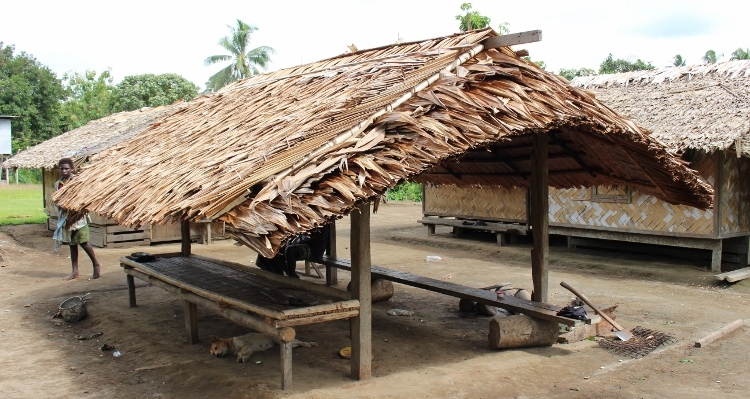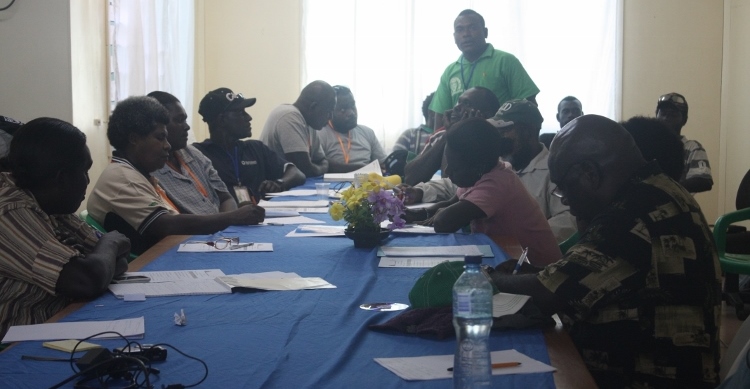Re-establishing sago stands in Bougainville
Heavy metal effluents from the mining activity in Panguna have polluted lands along the Jaba River. The pollution is also affecting health of the residents, who use the lSago is a tropical tree that belongs to the family Arecaceae (the palm family). In Papua New Guinea, two species of sago are recognized, namely Metroxylon sagu and M. salomonense (Solomon sago). The main use of sago is to harvest the starch from its stem. Due to its size, a large amount of starch can be extracted from the tree. The process of starch extraction is, however, long and labor intensive. In Bougainville, the Solomon sago is the dominant species. The Solomon sago is taller and its fronds are broader than those of M. sagu. For this reason, it is an excellent source of thatching materials.

The Solomon sago once densely covered the entire province of Bougainville to provide free materials for housing. The hard midrib of the frond is also crafted into an arrow. However, above all, sago is considered an indispensable part of the local landscape. Sago is truly in the heart of every Bougainvillean.

In 2012, Mr. Louis Kurika, of Bougainville origin, then Research and Development Coordinator at Papua New Guinea National Agricultural Research Institute (NARI)’s Bubia Station, was contacted by Mr. Zhon Bosco Miriona, a tour operator in Bougainville, for technical help to find out the cause of the decline, and possibly to find the solution. Louis and I together developed a plan to conduct a survey on the decline, and the project was funded by The Christensen Fund, a San Francisco-based philanthropic organization.
During the surveys conducted in 2013, the NARI team identified the cause of the decline to be a pith rot caused by an infecting fungus. The fungus appears to be vectored by weevils.

In November, 2013, a resolution was adopted in the conference held in Arawa, where Department of Primary Industries (DPI) officers representing each district of the Province were present. It was agreed that seeds from surviving sago trees found in Southern Bougainville were to be collected and the seedlings from these seeds to be screened for enhanced tolerance to the decline.

